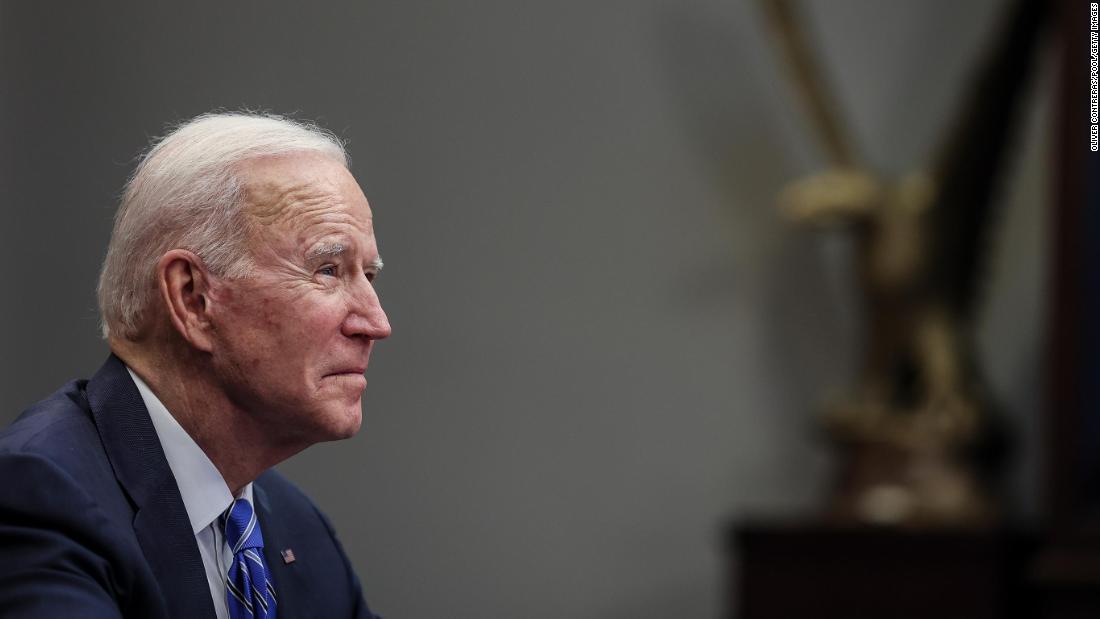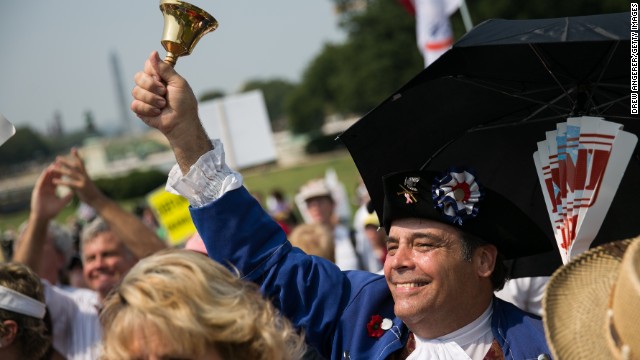Analysis: GOP’s shifting focus opens a path for Biden
That stress on cultural complaints reflects the shifting source of motivation inside the GOP coalition, with fewer voters responding to the warnings against “big government” once central to the party’s appeal and more viscerally responding to alarms that Democrats intend to transform “our country,” as former President Donald Trump often calls it, into something culturally unrecognizable.
“I think it’s very clear that on economic issues, the voters … want them to pass stuff and take action, and there’s not a lot of opposition out there,” says Democratic pollster Nick Gourevitch. “So Biden’s got running room.”
Why it’s different this time
Democratic Rep. Ron Kind, who represents a rural-flavored western Wisconsin district that Trump carried by almost 5 percentage points last November, told me he felt no hesitation about backing the Covid bill. Calls coming into his office, Kind told me, have been “10 to one positive. … The reaction has been amazing: overwhelming support.”
Likewise, Democratic Rep. Matt Cartwright of Pennsylvania, who also holds a seat in a blue-collar district Trump won by more than 4 points, says that among his colleagues in swing districts, “Teeth-gnashing, hand-wringing, pearl-clutching: All of those were absent in this.”
“In ’09 there was so much anger in the air, the big fat cats being bailed out … and people were looking for blood and who do we hold accountable,” Kind says. “And that’s not as easy to do when you’ve got a global pandemic.”
By contrast, the coronavirus outbreak has touched virtually all Americans: Even those who haven’t faced illness in their families, or disruption to their incomes, have seen the routines of daily life disintegrate.
In his central Pennsylvania district, Cartwright says, “you would struggle to find somebody who wasn’t affected by this pandemic negatively in some way.”
Yet just as important as the changed circumstances may be the evolving priorities of the GOP voter base.
“Donald Trump may have shifted the GOP coalition to a more economically populist position or revealed that there’s just less appetite for spending discipline on the right than there was before,” Republican pollster Kristen Soltis Anderson told me in an email.
“I think it’s pretty clear that in the modern Republican Party, spending control for its own sake is a minority taste, not a majority taste, and that partly explains why there hasn’t been this massive uprising at a $1.9 trillion bill,” Olsen says.
GOP anxiety about way of life widespread
Olsen’s national survey of Trump voters, conducted in January, found them crackling with the sense that they are culturally and demographically besieged. In that poll, roughly 9 in 10 Trump voters agreed with a series of stark propositions: that America is losing faith in the ideas that make the country great, that Christianity is under attack in the US and that discrimination against Whites “will increase a lot” in years ahead. Overwhelming majorities rejected the idea that Whites have any intrinsic advantage in American society or that Hispanic and Asian immigrants face discrimination. In the recent national American Enterprise Institute survey supervised by Cox, three-fourths of Republicans asserted that discrimination against Whites was as big a problem as bias against minorities.
Either way, whether these cultural anxieties are motivated primarily by racial resentment or not, what’s clear is they are burning brighter for GOP voters now than hostility to “big government.” “As conservative White Protestants moved from operating at the periphery of Republican politics to becoming the most critical part of the GOP base, their manifest cultural concerns, which have always incredibly important to these voters, have overshadowed the GOP’s traditional economic agenda,” says Cox.
Next up: Big spending on infrastructure
That half-hearted resistance seems likely to encourage Democrats to go big on the next stage of Biden’s economic agenda: the “Build Back Better” long-term growth proposal that will include a substantial infrastructure investment. Though the White House has not decided when to introduce the proposal, it will almost certainly include infrastructure spending in the range of about $300 billion annually, for a cumulative price tag over 10 years in the trillions.
Yet both inside the White House and Congress, Democrats are showing little hesitation about proposing that much new spending immediately after a package this big. Both Kind and Cartwright, holding districts that stretch deep into Trump country, say they would enthusiastically support a big infrastructure plan.
“I’d be very comfortable with it,” Cartwright says. “I have been serving in the US House since January 2013 and the whole time I have been saying out loud we need a big, big infrastructure package. It’s not just that the folks around here who build things for a living will benefit, it’s that the entire American economy will benefit.”
Steve Ricchetti, the White House counselor to Biden, told me the administration expects broad support for the infrastructure package when the President eventually unveils it.
“I believe there will be wide, deep bipartisan support for infrastructure because the need is so great,” he says. “I believe there’s a prospect for securing bipartisan support in Congress for this, but I am certain there will be bipartisan support throughout the country for this: governors, mayors, local officials whose economies are dependent on infrastructure investment, digital, energy, transportation, water. The business community will be enormously supportive of this; it’s an engine for the recovery.”
The open question for Biden, as he finalizes his next proposals, is whether there’s a cumulative weight of proposed spending that awakens the slumbering conservative recoil against “big government.” Both Clinton and Obama saw the grassroots backlashes against their agendas intensify when they followed their initial economic plans with other expensive proposals, particularly their efforts to overhaul the health care system. Each of those dynamics culminated in crushing losses for them in the first midterm after their election.
The problem is that both the cost of the federal response and the underlying disruption to society from the pandemic are so unprecedented that no one can confidently predict how much more spending Biden can add to his tab without provoking the backlash he has conspicuously avoided so far. Even Emanuel, who rarely expresses doubt, acknowledges, “I’m not even sure I can give you an educated guess on that.”
The safest bet is that so long as the GOP remains fixated on cultural and racial grievance, Democrats will feel confident pushing forward the most aggressive expansion of government’s role in the economy since President Lyndon Johnson’s Great Society during the 1960s.
![]()






